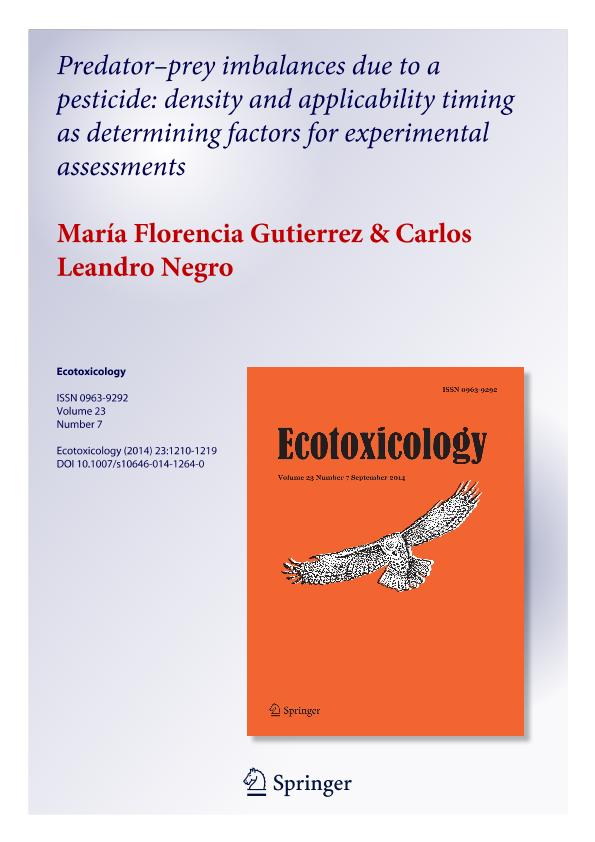Artículo
Predator–prey imbalances due to a pesticide: density and applicability timing as determining factors for experimental assessments
Fecha de publicación:
06/2014
Editorial:
Springer
Revista:
Ecotoxicology
ISSN:
0963-9292
e-ISSN:
1573-3017
Idioma:
Inglés
Tipo de recurso:
Artículo publicado
Clasificación temática:
Resumen
Predator–prey relationships are determining factors in sustaining community structure but xenobiotics, including pesticides, have the potential to alter them, causing imbalances at the ecosystem level. Although invertebrate predation on zooplankton is of high importance in shallow lakes, there is still little information regarding disturbances on this trophic interaction. This work assessed the potential effects of a chlorpyrifos-based pesticide (CLP) on the interaction between prawns Macrobrachium borellii and cladocerans Ceriodaphnia dubia, taking into account prey densities, specific time of exposure and contamination level. The analysis was focused on the specific sensitivity of both species and, especially, on the predation rate of M. borellii on C. dubia. The latter was evaluated through different treatments that combined predator and/or prey exposure to the insecticide, before (lapse of 12 h) or during the interaction. Under low prey density, when prawns were previously exposed to the insecticide, their consumption rate was lower than that of controls. Conversely, when cladocerans or both species were previously exposed, the prawns’ feeding rate was higher. Under high prey density, there were no substantial differences among treatments. Comparatively, cladocerans were significantly more consumed when the exposure of both species was performed before rather than during the interaction. From the results obtained, it can be assumed that the trophic interaction under study is sensitive to CLP and that individual density and specific time of exposure are important variables to be considered in similar studies in order to obtain realistic results.
Archivos asociados
Licencia
Identificadores
Colecciones
Articulos(INALI)
Articulos de INST.NAC.DE LIMNOLOGIA (I)
Articulos de INST.NAC.DE LIMNOLOGIA (I)
Citación
Negro, Carlos Leandro; Gutierrez, Marìa Florencia; Predator–prey imbalances due to a pesticide: density and applicability timing as determining factors for experimental assessments; Springer; Ecotoxicology; 23; 7; 6-2014; 1210-1219
Compartir
Altmétricas




